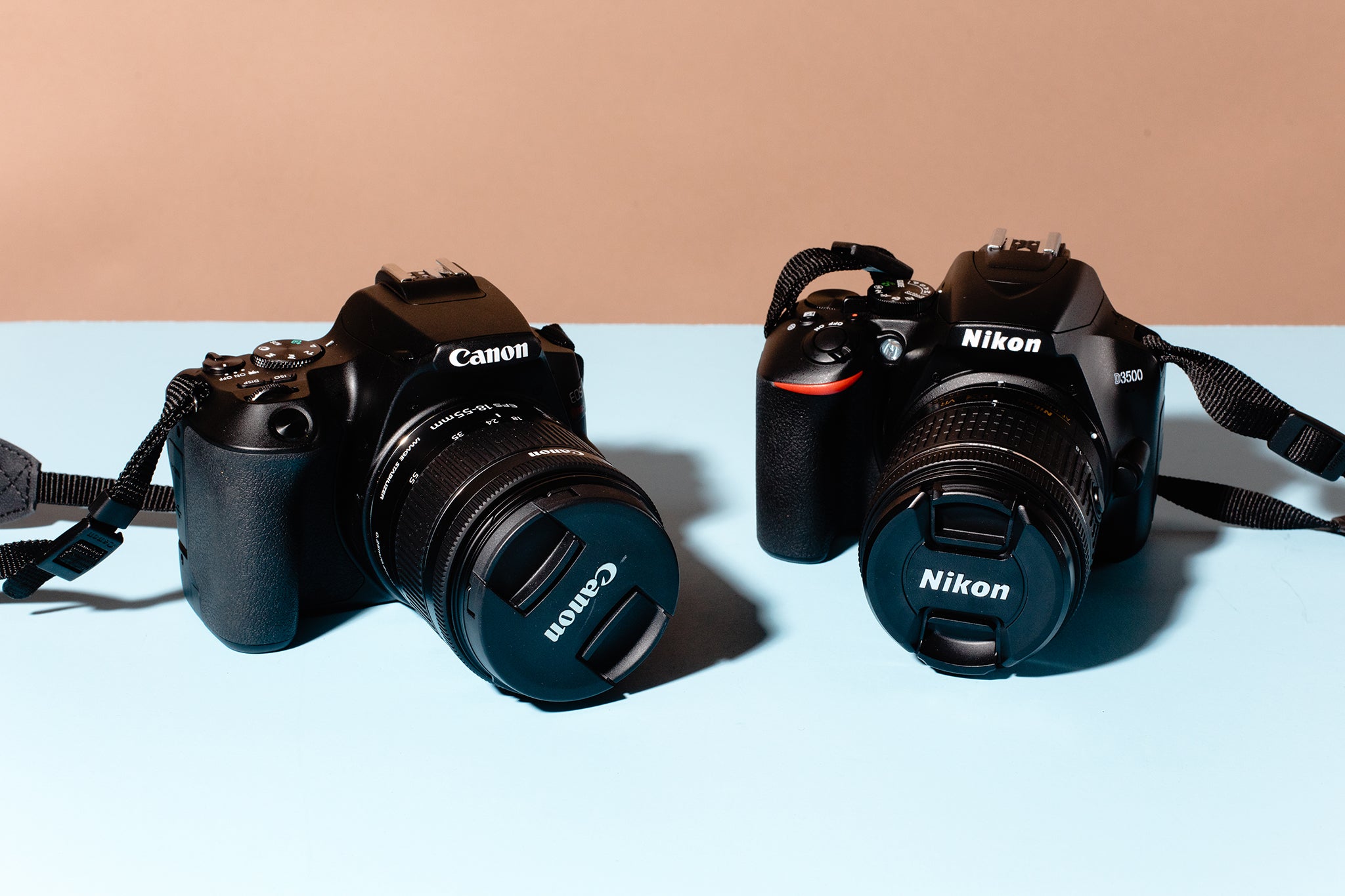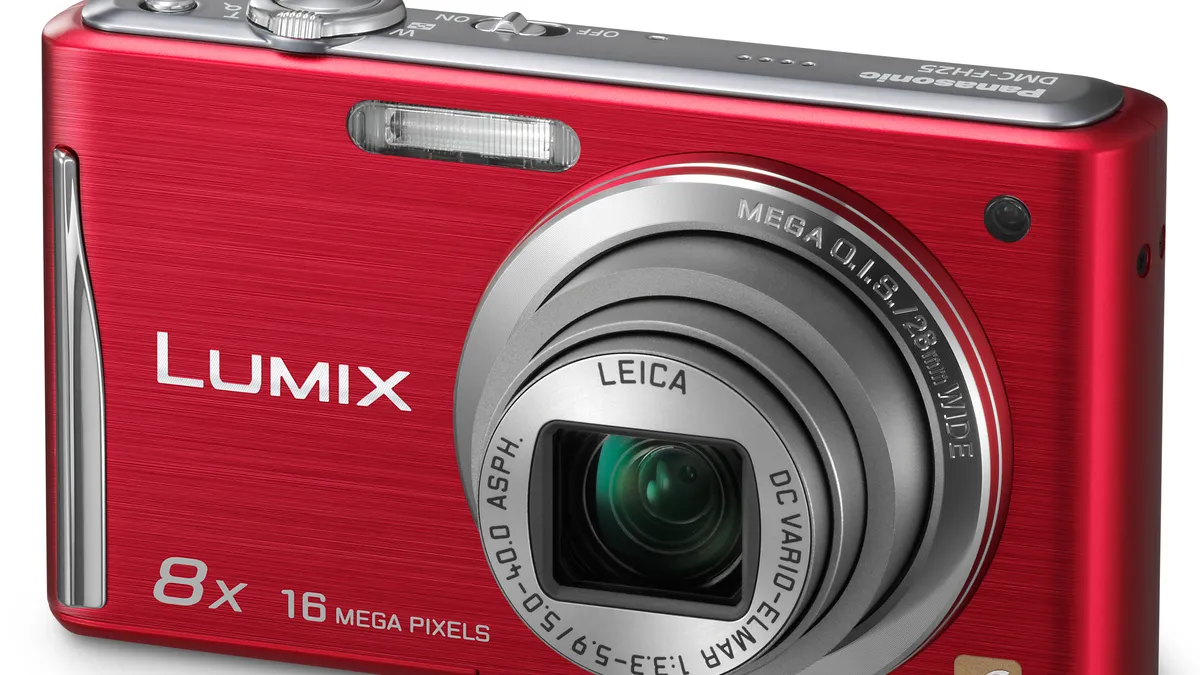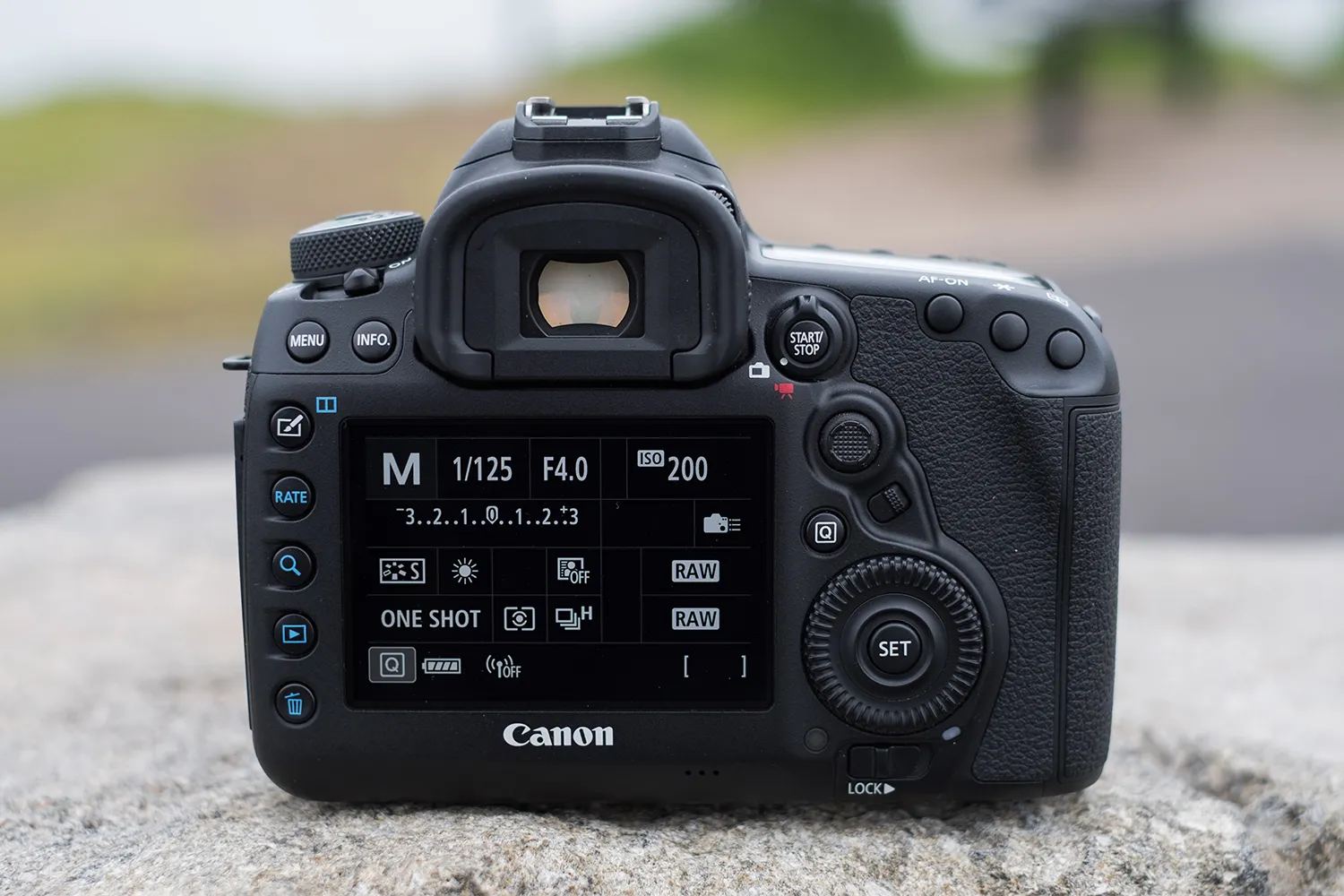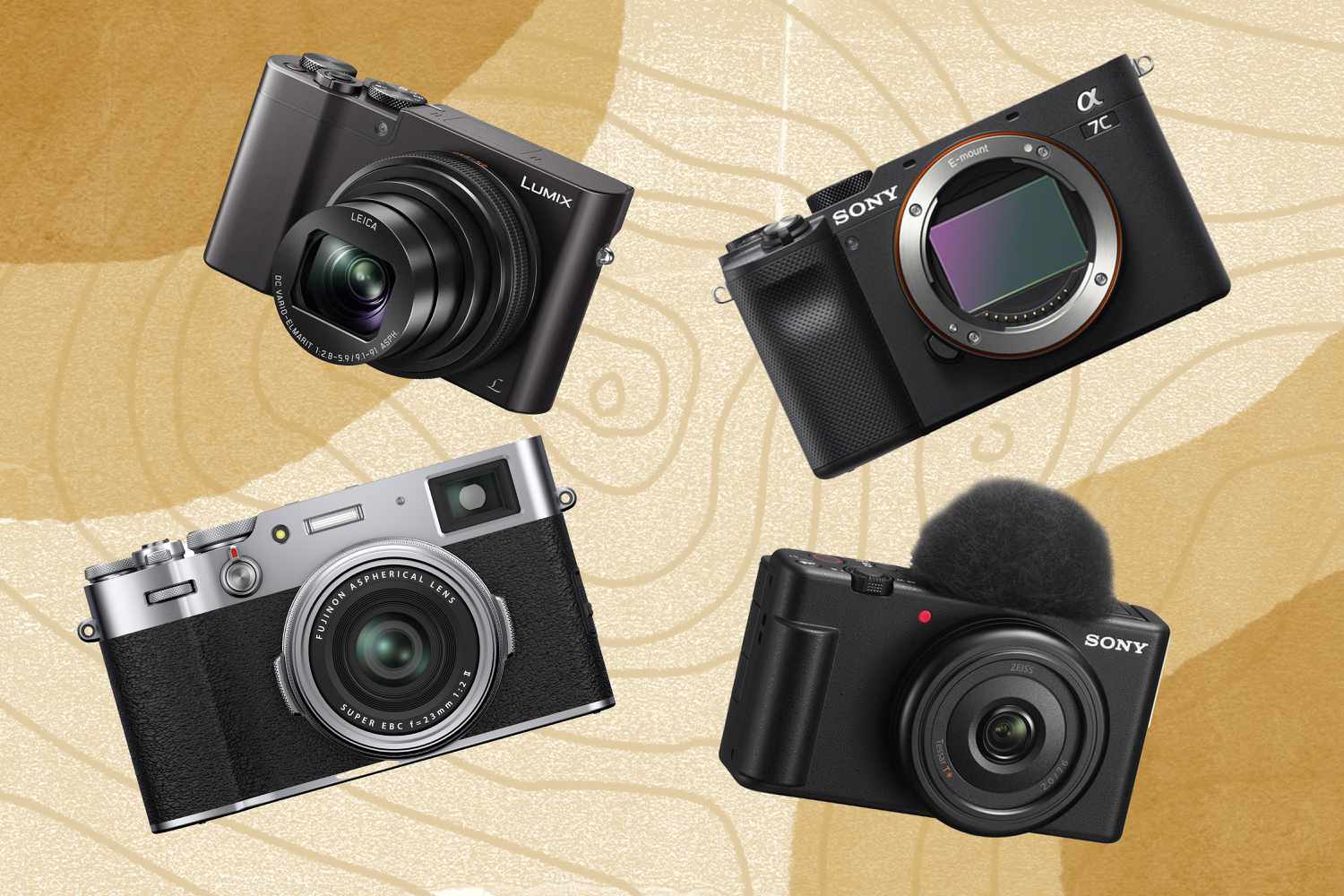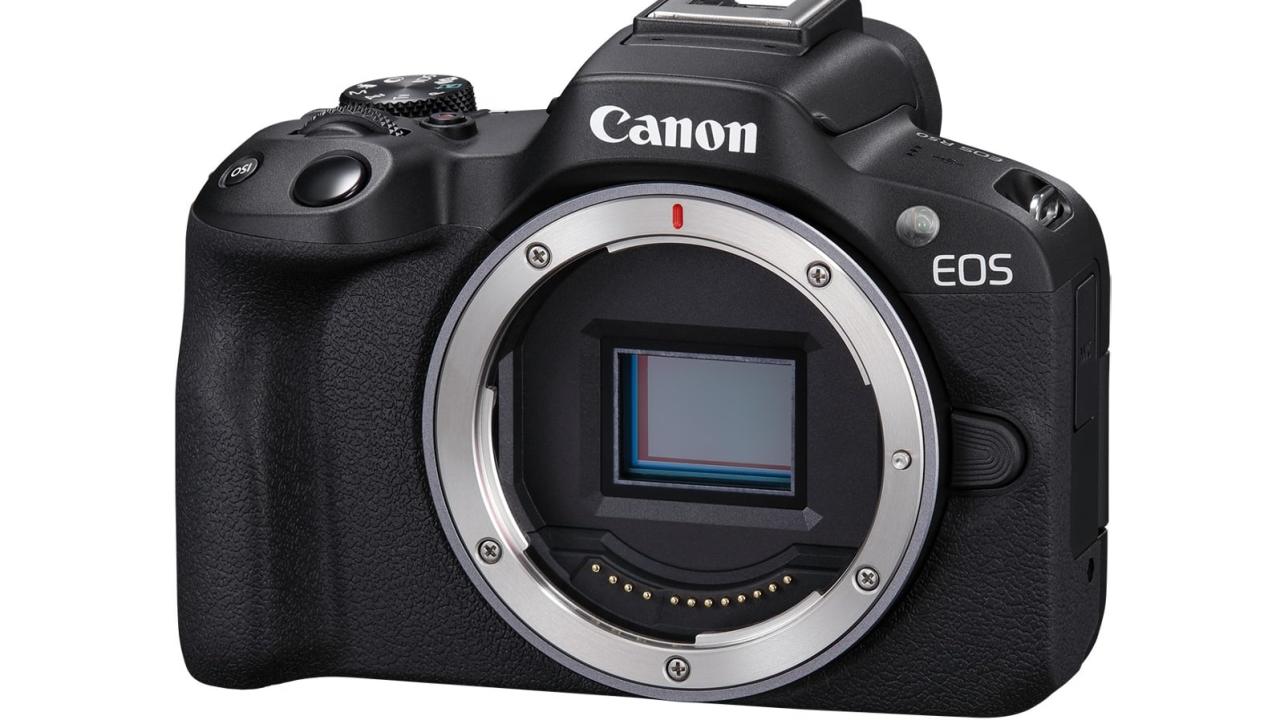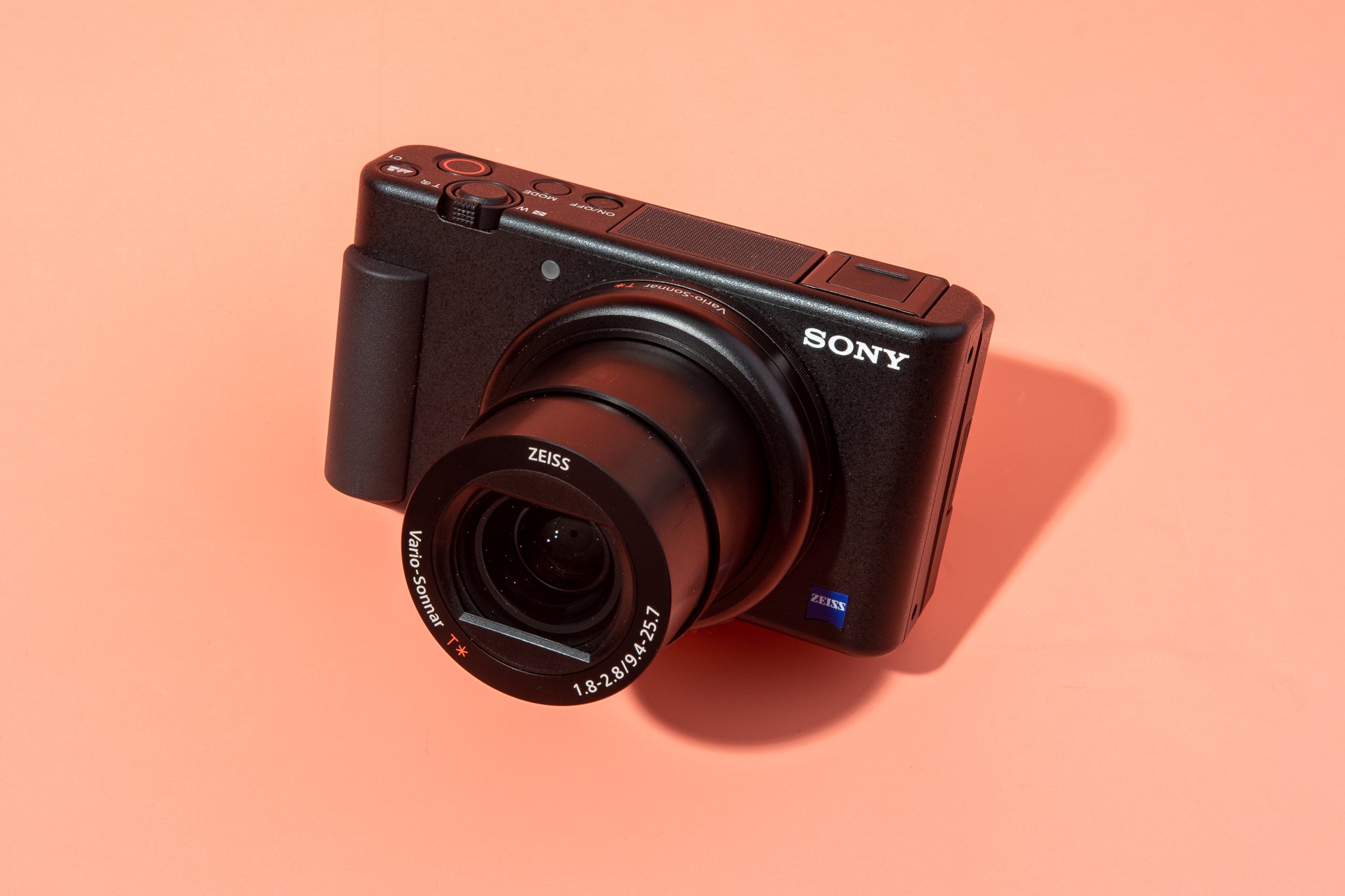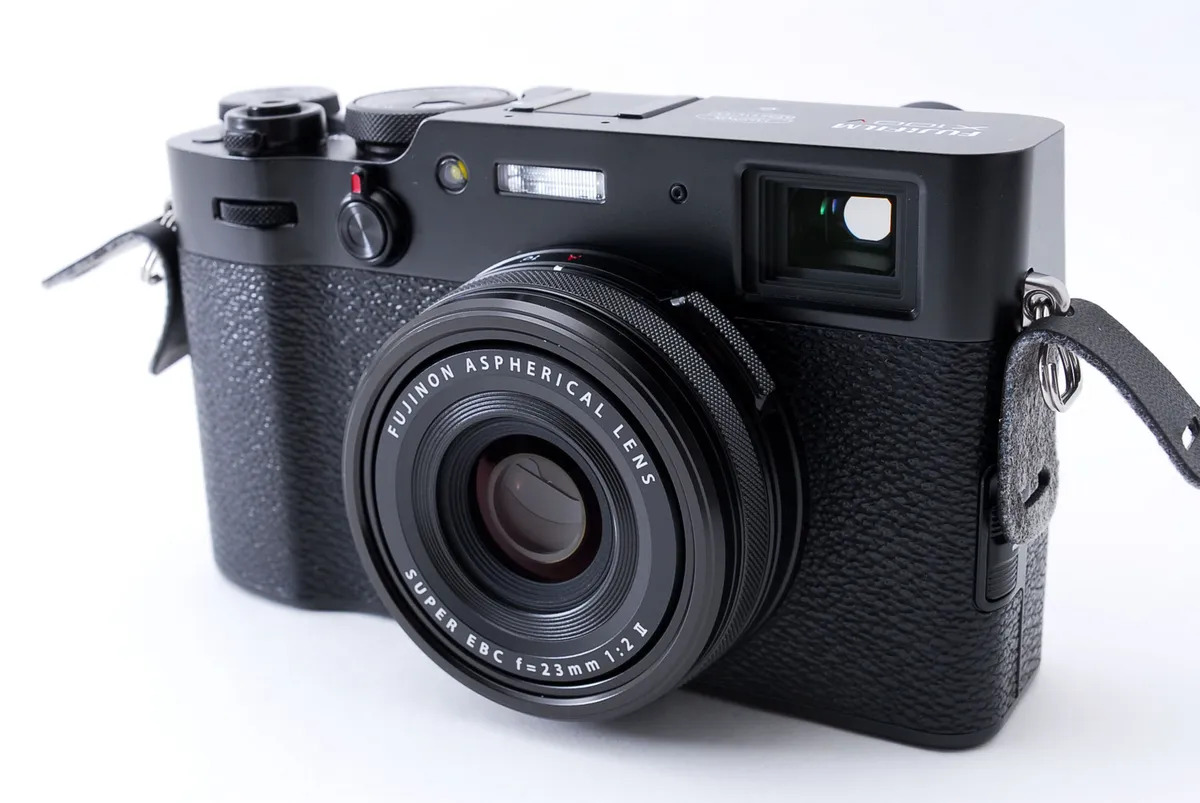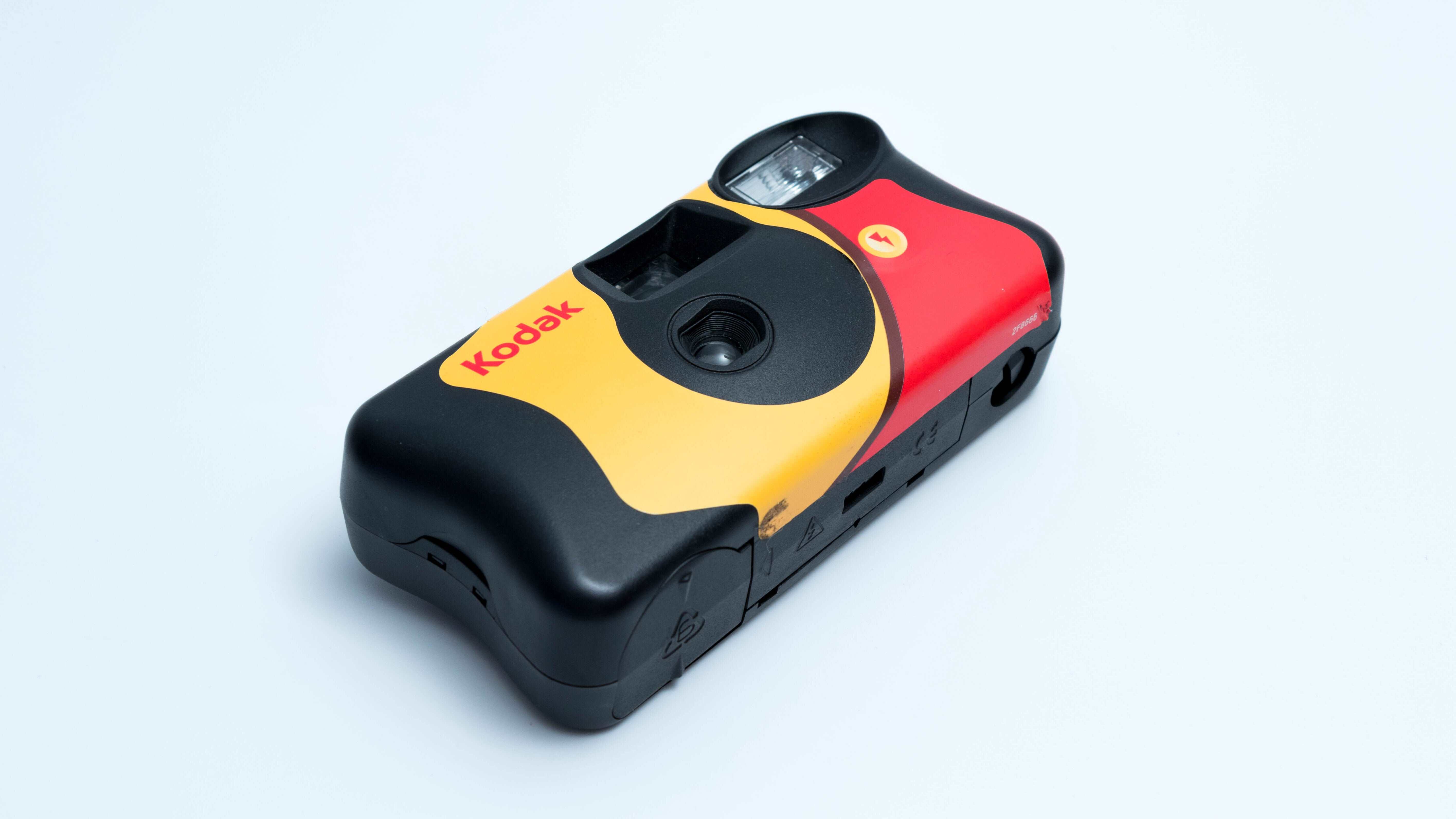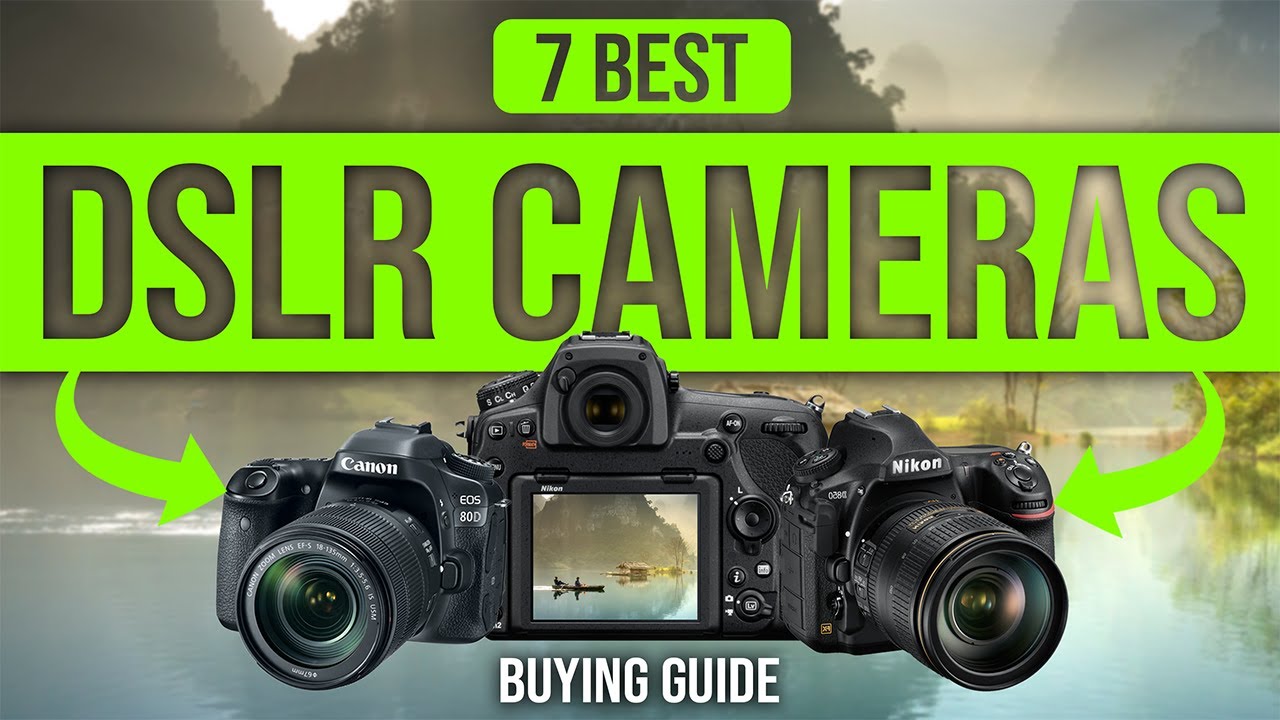Why You Need a Digital Camera
With the advancements in technology, smartphones have become the go-to device for capturing and sharing photos. However, if you are looking to take your photography skills to the next level, investing in a digital camera is essential. Here are a few reasons why:
- Image Quality: While smartphone cameras have certainly improved, digital cameras offer superior image quality. They have larger sensors and better optics, allowing you to capture sharper and more detailed photos.
- Manual Control: Digital cameras provide you with full control over settings such as aperture, shutter speed, and ISO. This level of control allows you to be more creative with your photography and experiment with different techniques.
- Zoom Capability: Most digital cameras offer optical zoom, which allows you to get closer to your subject without sacrificing quality. This feature is particularly useful for wildlife photography, sports events, or capturing distant landscapes.
- Low Light Performance: Digital cameras are equipped with larger sensors and dedicated image processors, enabling them to perform better in low light conditions. This means you can capture stunning nighttime shots or indoor photos without excessive noise or blur.
- Flexibility to Change Lenses: One of the significant advantages of digital cameras is the ability to interchange lenses. This allows you to use different types of lenses depending on the subject or the effect you want to achieve. Whether it’s a wide-angle lens for capturing landscapes or a macro lens for close-up shots, the options are endless.
By investing in a digital camera, you are investing in your passion for photography. It enables you to take your skills to the next level and gives you the opportunity to capture images in ways that a smartphone simply cannot match. So, if you are serious about photography and want to unleash your creativity, a digital camera is a must-have tool.
Understanding the Basics of Digital Cameras
If you are new to the world of digital photography, understanding the basics of how digital cameras work is crucial. By familiarizing yourself with the following key concepts, you will be able to make informed decisions when choosing a camera and get the most out of your photography experience:
- Sensors: The image sensor is the heart of a digital camera. It captures light and converts it into an image. Generally, larger sensors produce better image quality, especially in low light situations.
- Resolution: Resolution refers to the number of pixels a camera can capture. Higher resolution means more detail in your photos. However, keep in mind that higher resolution also means larger file sizes.
- Lens: The lens is responsible for focusing and directing light onto the camera’s sensor. Different lenses have different focal lengths, which determine the field of view and magnification of the image. Understanding different lens types will help you choose the right one for your needs.
- Aperture: Aperture controls the amount of light that enters the camera through the lens. It also affects the depth of field, determining how much of the image is in focus. Lower aperture values (e.g., f/1.8) allow more light and create a shallow depth of field.
- Shutter Speed: Shutter speed refers to the length of time the camera’s shutter remains open. It influences the amount of light that reaches the sensor and affects the motion blur in your photos. Higher shutter speeds freeze action, while slower speeds create a sense of motion.
- ISO: ISO measures the camera’s sensitivity to light. A higher ISO setting allows you to capture images in low light conditions without using a flash. However, higher ISO values can introduce noise or graininess into your photos.
- White Balance: White balance ensures that colors appear correct under different lighting conditions. It adjusts the camera’s settings to capture accurate colors, especially when shooting indoors or under mixed lighting.
- File Formats: Digital cameras offer various file formats for saving photos, such as JPEG and RAW. JPEG is a compressed format that takes up less space and is suitable for everyday photography. RAW files contain all the data captured by the sensor and offer more flexibility for post-processing.
By grasping these fundamental concepts, you will have a solid foundation for using a digital camera effectively. Take your time to experiment and practice using different settings and techniques to unleash your creativity and capture stunning images.
Factors to Consider When Choosing a Camera
Choosing the right digital camera can be overwhelming with the multitude of options available in the market. To make an informed decision, consider the following factors that will align with your specific needs and preferences:
- Intended Use: Determine how you plan to use the camera. Are you interested in portrait photography, landscape photography, or capturing action shots? This will help you decide on the type of camera that suits your needs, such as a DSLR, mirrorless, or point-and-shoot camera.
- Budget: Set a budget that you are comfortable with. Cameras vary in price based on their features and specifications. It’s essential to strike a balance between your desired features and your budget.
- Image Quality: Consider the resolution and sensor size of the camera. Higher resolution and larger sensors generally produce better image quality, especially in low light conditions.
- Size and Portability: Determine how important portability is to you. If you prefer a compact and lightweight camera that you can carry with you everywhere, a point-and-shoot or mirrorless camera might be suitable. If you don’t mind a bulkier camera with more advanced features, a DSLR might be a better fit.
- Features and Controls: Take into account the features and controls that are important to you. Consider factors such as manual control options, autofocus capabilities, built-in image stabilization, and connectivity options like Wi-Fi or Bluetooth.
- Lens System: Assess the availability and variety of lenses for the camera. Different lenses allow you to achieve different types of shots and effects. Ensure that the camera you choose has a lens system that meets your photography objectives.
- User-Friendliness: Consider the camera’s user interface and ease of use. If you are a beginner, a camera with intuitive controls and automatic shooting modes can help you get started without a steep learning curve.
- Battery Life: Evaluate the camera’s battery life and the availability of spare batteries. This is particularly important if you plan on traveling or shooting for extended periods without access to charging facilities.
- Reviews and Recommendations: Read reviews and seek recommendations from professional photographers or trusted sources. Hearing from experienced users can provide valuable insights into the camera’s performance and reliability.
By considering these factors, you can narrow down your options and find a camera that suits your needs and budget. Remember, there is no “one size fits all” camera, so take the time to research and make an informed decision based on your specific requirements.
The Best Digital Camera Models for Beginners
As a beginner, choosing the right digital camera can be a daunting task. To make your search easier, here are some of the best digital camera models that are beginner-friendly and offer excellent features:
Entry-Level DSLR Cameras:
- Nikon D3500: This camera offers a user-friendly interface, excellent image quality, and a comfortable grip. It has a Guide Mode that provides step-by-step instructions for different shooting scenarios, making it ideal for beginners.
- Canon EOS Rebel T7i: With its fast autofocus, vari-angle touchscreen, and beginner-friendly features, the Rebel T7i is a popular choice for photography enthusiasts. Its intuitive interface and excellent image quality make learning photography a breeze.
- Pentax K-70: The K-70 is weather-sealed, making it suitable for outdoor photography. It has a user-friendly interface, in-camera image stabilization, and a tilting LCD that allows for easy composition. It offers a great value for its price.
Entry-Level Mirrorless Cameras:
- Sony Alpha a6000: Widely regarded as one of the best mirrorless cameras for beginners, the a6000 offers a compact size, excellent autofocus, and impressive image quality. It has a user-friendly interface and a wide range of compatible lenses.
- Fujifilm X-T200: This camera combines retro design with modern features. It offers a high-resolution electronic viewfinder, a fully articulating touchscreen, and a beginner-friendly interface. With its film simulation modes, it delivers beautiful color reproduction.
- Olympus OM-D E-M10 Mark III: The E-M10 Mark III is lightweight and compact, making it easy to carry around. It features an impressive image stabilization system, an intuitive interface, and a variety of creative shooting modes.
Point-and-Shoot Cameras:
- Canon PowerShot G7 X Mark II: This compact camera offers a large 1-inch sensor, a fast lens, and excellent image quality. It has a user-friendly interface, Wi-Fi connectivity, and a tilting touchscreen for easy composition.
- Sony Cyber-shot RX100 III: The RX100 III features a 1-inch sensor, a versatile zoom lens, and a pop-up electronic viewfinder. It offers advanced features in a compact size and delivers impressive image quality.
- Panasonic Lumix LX10 / LX15: With its fast lens, high-resolution sensor, and 4K video capabilities, the Lumix LX10 is a well-rounded point-and-shoot camera. It has a user-friendly interface, built-in Wi-Fi, and a compact design.
These camera models offer excellent features, user-friendly interfaces, and good image quality, making them ideal choices for beginners. Consider your budget, shooting preferences, and desired features when selecting the best camera for your needs.
Comparison of Entry-Level DSLR Cameras
When it comes to entry-level DSLR cameras, there are several models that cater to beginners with their user-friendly features and excellent image quality. Let’s compare some of the top options:
Nikon D3500
The Nikon D3500 is a popular choice among beginners due to its straightforward user interface and excellent image quality. It offers a comfortable grip, making it easy to handle, and has a Guide Mode that provides step-by-step instructions for different shooting scenarios. The D3500 features a 24.2-megapixel sensor, can shoot continuously at 5 frames per second, and has an ISO range of 100-25,600. This camera delivers sharp, detailed images and performs well in low light conditions. Overall, the Nikon D3500 is a reliable DSLR option for beginners.
Canon EOS Rebel T7i
The Canon EOS Rebel T7i is another excellent entry-level DSLR camera that offers intuitive controls and impressive performance. It features a 24.2-megapixel sensor, Canon’s DIGIC 7 image processor, and a 45-point autofocus system. The T7i also has a vari-angle touchscreen, allowing for easy composition and navigation through the menu. It can shoot continuously at 6 frames per second and has an ISO range of 100-25,600. The Rebel T7i delivers superb image quality and offers advanced features like Dual Pixel CMOS AF for smooth and accurate autofocus during video recording.
Pentax K-70
The Pentax K-70 is a weather-sealed DSLR camera suitable for outdoor photography. It features a 24.2-megapixel sensor, in-camera image stabilization, and a high-resolution vari-angle LCD. The K-70 has an ISO range of 100-102,400, allowing for excellent low light performance. It can shoot continuously at 6 frames per second and offers a range of creative shooting modes and filters. The K-70 also has built-in Wi-Fi and is compatible with a wide range of lenses. With its robust build quality and advanced features, the Pentax K-70 is an excellent choice for beginners looking for a durable and versatile DSLR camera.
While each of these entry-level DSLR cameras has its own strengths, ultimately, the choice depends on personal preferences, shooting style, and budget. Consider factors such as image quality, ergonomics, functionality, and available accessories when making your decision. It’s also worth visiting a local camera store to hold and try out different models before making your final choice. With any of these DSLR cameras, you’ll have a reliable tool to unleash your creativity and capture remarkable images.
Comparison of Entry-Level Mirrorless Cameras
Entry-level mirrorless cameras are gaining popularity among beginners for their compact size, versatility, and impressive image quality. Let’s compare some of the top options when it comes to entry-level mirrorless cameras:
Sony Alpha a6000
The Sony Alpha a6000 is often touted as one of the best mirrorless cameras for beginners. It features a 24.3-megapixel APS-C sensor and a fast hybrid autofocus system with 179 phase-detection points. The a6000 offers a compact size, making it highly portable, and has a built-in electronic viewfinder and a tilting LCD screen for easy composition. It can shoot continuously at 11 frames per second and has an ISO range of 100-25,600. The a6000 delivers exceptional image quality, impressive low light performance, and offers a wide range of compatible lenses. With its user-friendly interface and advanced features, this camera is a great choice for beginners.
Fujifilm X-T200
The Fujifilm X-T200 combines retro design with modern features, making it an attractive option for beginners. It features a 24.2-megapixel APS-C sensor and an intuitive user interface. The X-T200 offers a high-resolution electronic viewfinder, a fully articulating touchscreen, and in-camera image stabilization. It can shoot continuously at 8 frames per second and has an ISO range of 200-12,800. The X-T200 also boasts Fujifilm’s renowned film simulation modes, which deliver exceptional color reproduction. With its stylish design and beginner-friendly features, the Fujifilm X-T200 offers a unique shooting experience for beginners.
Olympus OM-D E-M10 Mark III
The Olympus OM-D E-M10 Mark III is a lightweight and compact mirrorless camera that packs a punch in terms of features and performance. It features a 16.1-megapixel Micro Four Thirds sensor and built-in image stabilization for steady shots. The E-M10 Mark III offers a 121-point autofocus system, a high-resolution electronic viewfinder, and a tilting touchscreen LCD. It can shoot continuously at 8.6 frames per second and has an ISO range of 200-25,600. This camera also offers a variety of creative shooting modes and art filters to enhance your photography. With its small size, powerful features, and intuitive controls, the Olympus OM-D E-M10 Mark III is a reliable option for beginners.
Each of these entry-level mirrorless cameras has its own advantages, so it’s important to consider factors such as image quality, handling, feature set, and available lenses. Additionally, consider your shooting preferences, budget, and long-term goals in photography. Ultimately, any of these mirrorless cameras will provide a solid foundation for beginners to explore their creativity and capture stunning images.
Comparison of Point-and-Shoot Cameras
Point-and-shoot cameras are compact and easy to use, making them a popular choice among beginners. Let’s compare some of the top options in the category:
Canon PowerShot G7 X Mark II
The Canon PowerShot G7 X Mark II is a compact point-and-shoot camera known for its excellent image quality. It features a 1-inch 20.1-megapixel sensor and a bright f/1.8-2.8 lens, allowing for stunning low-light performance and shallow depth of field shots. The G7 X Mark II has a versatile 4.2x optical zoom range and built-in image stabilization. It offers intuitive controls, a tilting touchscreen, and advanced features like Full HD video recording and built-in Wi-Fi connectivity. Overall, the PowerShot G7 X Mark II is an excellent choice for beginners looking for a portable camera that delivers exceptional image quality.
Sony Cyber-shot RX100 III
The Sony Cyber-shot RX100 III is another top pick in the point-and-shoot category. It features a 1-inch 20.1-megapixel sensor and a Zeiss Vario-Sonnar T* f/1.8-2.8 lens. The RX100 III offers a versatile 2.9x optical zoom range and built-in image stabilization for sharp and steady shots. It has a retractable viewfinder, a tilting LCD screen, and records Full HD videos. The RX100 III offers customizable controls, Wi-Fi and NFC connectivity, and advanced shooting modes. With its compact size and excellent image quality, the RX100 III is a great option for beginners looking for portability without sacrificing performance.
Panasonic Lumix LX10 / LX15
The Panasonic Lumix LX10 (LX15 outside the United States) is a compact camera that packs a punch in terms of features. It features a 1-inch 20.1-megapixel sensor and a fast Leica DC Vario-Summilux f/1.4-2.8 lens. The LX10/LX15 offers a versatile 3x optical zoom range and built-in image stabilization. It has a 3-inch touchscreen LCD and records 4K Ultra HD videos. The LX10/LX15 also boasts advanced autofocus capabilities, a customizable control ring, and Wi-Fi connectivity. It is a great choice for beginners who want a compact camera with excellent image quality and advanced features.
When comparing point-and-shoot cameras, consider factors such as image quality, lens capabilities, ease of use, and additional features like built-in Wi-Fi or 4K video recording. Keep in mind your shooting preferences, portability needs, and budget to find the perfect point-and-shoot camera that suits your needs as a beginner.
The Pros and Cons of Each Camera Type
When choosing a camera, it’s important to consider the pros and cons of each camera type to determine which one best suits your needs as a beginner photographer.
DSLR Cameras
Pros:
- Excellent image quality and low-light performance
- Wide range of compatible lenses for different shooting scenarios
- Manual control over settings for creative flexibility
- Optical viewfinder for a direct and clear view of the subject
Cons:
- Bulkier and heavier compared to mirrorless and point-and-shoot cameras
- Higher learning curve for beginners due to the complexity of features and controls
- Limited video capabilities compared to some mirrorless cameras
Mirrorless Cameras
Pros:
- Compact, lightweight, and portable
- Excellent image quality and low-light performance
- Wide range of compatible lenses for versatility
- Electronic viewfinder for real-time preview of exposure and settings
- Fast and accurate autofocus systems
Cons:
- Smaller battery life compared to DSLRs
- Less optical viewfinder options, relying solely on electronic viewfinders
- Some models may have limited lens options compared to DSLRs
Point-and-Shoot Cameras
Pros:
- Compact, lightweight, and highly portable
- Easy to use with automatic shooting modes
- Great for everyday photography and travels
- Some models offer advanced features like manual controls and Wi-Fi connectivity
- Usually more affordable compared to DSLRs and mirrorless cameras
Cons:
- Generally, smaller image sensors result in reduced image quality compared to DSLRs and mirrorless cameras
- Limited control over settings and customization
- Less versatility and limited lens options
- May not perform as well in low-light conditions
Consider these pros and cons when choosing your camera type. Identifying your shooting preferences, budget, and learning curve will help you make an informed decision and find the camera type that best suits your needs as a beginner photographer.
How to Take Stunning Photos with Your New Camera
Now that you have your new camera, it’s time to unleash your creativity and capture stunning photos. Here are some tips to help you make the most of your photography experience:
1. Understand your camera:
Take the time to read the camera manual to familiarize yourself with its features and controls. Understanding how each setting works will enable you to make informed decisions while capturing images.
2. Experiment with different shooting modes:
Most cameras offer various shooting modes, including automatic modes, scene modes, and manual mode. Experiment with these modes to understand their effects and limitations. Manual mode gives you full control over settings, allowing for more creative freedom.
3. Master composition techniques:
Composition is key to capturing visually appealing photos. Learn and practice techniques such as the rule of thirds, leading lines, framing, and utilizing negative space. Experiment with different perspectives and angles to add interest to your shots.
4. Pay attention to lighting:
Lighting plays a vital role in photography. Understand how natural light interacts with your subject and learn to manipulate it to your advantage. Experiment with different times of the day and angles to create stunning lighting effects.
5. Use the right lens for the job:
If you have a camera with interchangeable lenses, consider the type of photography you want to pursue. Use wide-angle lenses for landscapes, telephoto lenses for wildlife or sports, and macro lenses for close-up shots. Each lens will offer different perspectives and capabilities.
6. Practice patience and persistence:
Improving your photography skills takes time and practice. Be patient with yourself and keep experimenting. Learn from your mistakes and use them as stepping stones to refine your technique and vision.
7. Edit and post-process your photos:
Post-processing can enhance your photos and bring out their true potential. Experiment with editing software to adjust exposure, contrast, colors, and other parameters. But remember, editing should complement your photos, not overpower them.
8. Seek inspiration and learn from others:
Look at the work of other photographers for inspiration. Study their composition, lighting, and techniques. Join photography communities or forums to learn and engage with fellow photographers. Continuous learning and being open to new ideas will help you grow as a photographer.
Remember, photography is a creative journey, and there are no right or wrong ways to capture an image. Embrace your unique perspective, keep practicing, and have fun exploring the limitless possibilities of your new camera.
Tips for Beginners to Improve Photography Skills
Photography is an art that requires practice, patience, and a willingness to learn. Whether you’re a beginner or have some basic knowledge, here are some valuable tips to help you improve your photography skills:
1. Understand basic photography principles:
Learn about key concepts such as exposure, aperture, shutter speed, ISO, and composition. Understanding these principles will give you a strong foundation to build upon as you explore your photography journey.
2. Take your camera everywhere:
To become a better photographer, practice is essential. Carry your camera with you wherever you go, and seize every opportunity to capture interesting subjects and moments. Practice will help you develop your eye for detail and composition.
3. Study the work of influential photographers:
Look at the work of renowned photographers who specialize in your area of interest. Analyze their composition, lighting, and storytelling techniques. This can inspire and guide you in developing your own unique style.
4. Learn to observe and appreciate light:
Pay attention to how light impacts your subjects. Observe how different lighting conditions, such as golden hour or harsh midday light, affect the mood and quality of your images.
5. Experiment with different genres:
Explore different genres of photography to find your passion. Try landscape, portrait, street, wildlife, or macro photography. By experimenting, you’ll discover what excites you and allows you to express your creativity.
6. Practice composition techniques:
Experiment with composition techniques like the rule of thirds, leading lines, symmetry, and depth of field. These techniques will help you create visually engaging and well-balanced images.
7. Learn from your mistakes:
Don’t be discouraged by mistakes or unsuccessful shots. Instead, use them as valuable learning opportunities. Reflect on why certain photos didn’t turn out the way you wanted and adjust your approach accordingly.
8. Embrace constructive criticism:
Seek feedback from fellow photographers or join photography groups or forums that offer constructive criticism. Accepting and implementing feedback can help you identify areas for improvement and refine your skills.
9. Explore your camera’s manual settings:
Experiment with manual settings like aperture, shutter speed, and ISO. Understanding these settings and how they affect your images will give you greater control over your photography.
10. Practice patience and perseverance:
Becoming a skilled photographer takes time and dedication. Be patient with yourself and keep pushing your boundaries. Embrace challenges and learn from them. Remember, growth and improvement come with practice and persistence.
By following these tips and continuously honing your skills, you’ll be able to improve your photography and capture images that truly speak to your unique vision and creativity.
Final Thoughts and Recommendations
As a beginner in the world of photography, investing in a digital camera opens up a whole new realm of creative possibilities. With the right camera, knowledge, and practice, you can capture stunning images that tell stories, evoke emotions, and preserve precious memories. Here are some final thoughts and recommendations to help you on your photography journey:
1. Invest in quality lenses:
While the camera body is important, the quality of lenses can significantly impact the overall image quality. Consider investing in good lenses that meet your specific photography needs and budget.
2. Learn to edit your photos:
Post-processing is an integral part of digital photography. Learning how to edit your photos using editing software can enhance their visual appeal and help you achieve your desired artistic vision. Experiment with editing tools but remember to maintain the authenticity of the original image.
3. Practice regularly:
Improving your photography skills requires practice and consistency. Make it a habit to go out regularly, explore different locations, and experiment with different subjects and techniques. The more you practice, the more confident and skilled you will become.
4. Seek inspiration outside of photography:
Look for inspiration beyond photography. Explore different art forms, nature, travel, and literature. By broadening your horizons, you can develop a unique perspective and incorporate diverse influences into your photography.
5. Embrace the learning process:
Photography is a continuous learning process. Don’t be afraid to make mistakes or try new things. Embrace challenges and see them as opportunities for growth and development. Push yourself to learn new techniques and experiment with different styles.
6. Find a supportive community:
Join photography clubs or online communities where you can connect with fellow photographers, share your work, seek feedback, and learn from others. Engaging with a supportive community can provide inspiration, motivation, and valuable insights into improving your craft.
7. Capture meaningful moments:
Remember that photography is not just about capturing aesthetically pleasing images but also about telling stories and preserving special moments. Look for the beauty in everyday life and strive to create images that hold personal significance and emotional impact.
Photography is a journey that never truly ends. Enjoy the process, stay curious, and never stop learning. With passion, dedication, and the right tools, you can continue to grow as a photographer and create images that reflect your unique vision and passion.







